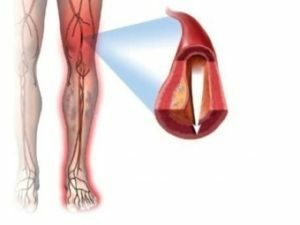 Circulatory disturbance in the lower limbs is a consequence of changes in the quality and quantity of blood in the vessels of the legs or as a result of their damage.
Circulatory disturbance in the lower limbs is a consequence of changes in the quality and quantity of blood in the vessels of the legs or as a result of their damage.
In general, disturbed circulation in the legs can be both a co-morbid disease in which specific parts of the vessels are affected, as well as an independent disease that is characterized by the involvement of distal vessels.
The disease has its own classification, which looks like this:
- as a result of violation of arterial patency develops arterial insufficiency that can be acute or chronic;
- with venous outflow develops venous insufficiency, which also can manifest itself in chronic or acute form;
- , and finally, polyneuropathy and diabetic microangiopathy are distinguished.
Contents
- Causes of the development of a disorder
- Symptoms of circulatory disorders in the legs
- Diagnostic criteria
- Traditional treatment of the disease
- What can I do at home
- General strengthening procedures
- Folk recipes
- Strengthening of the leg vessels
- Consequences of the disease
- What can I do at home
Reasons for the development of the
violation Factors that meetfor the development of pathology quite a lot, at present, the violation of blood circulation in the arteries is divided into three basesThe
- affects the peripheral parts of the , that is, the arteries and their further narrowing due to the onset of the formation of atherosclerotic plaques;
- artery walls are inflamed ;
- observed spasm of arteries .
Such disorders in the bloodstream are often observed due to the following developing diseases:
- Obliterating atherosclerosis , which is caused by the accumulation of fat-like substances and cholesterol in the vessels. On the basis of this, sclerotic plaques are formed, which in time can lead to both partial and complete blockage of the passage of the vessels. Affect such a disease can a representative of any gender and age category.
- The cause of the development of pathology can be an autoimmune disease of the vessels in a chronic form( tromboangiite ).In this case, due to spasmodic vessels in the region of the thigh, blood can not enter the lower limbs in sufficient volume. The development of this
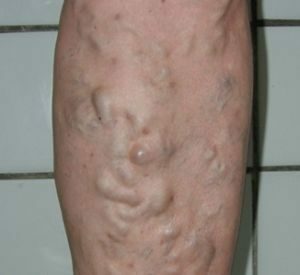 disease is promoted by bad habits. Often, the disease is observed in young people, representatives of the male.
disease is promoted by bad habits. Often, the disease is observed in young people, representatives of the male. - The most terrible complication is the diabetic foot , which is the result of diabetic vascular lesions. If blood does not flow to the legs in the right amount, gangrene may develop. In this case, the affected limbs are amputated.
- Violation of the venous circulation of the lower limbs causes thrombophlebitis and varicose veins .In this case, the system of blood outflow is disrupted, and as a result, the walls of the vessels are weakened.
Symptoms of circulatory disorders in the legs
The circulatory system is disrupted due to blockage or narrowing of the arteries. Often, a person afflicted with this disease complains of severe pain while walking, which have the property to subside in a state of rest.
This phenomenon has been termed intermittent claudication. This effect can be caused by a number of diseases, but in any case, such symptoms are a sign of problems in the arteries.
For the occurrence of intermittent claudication, factors such as:
- may be responsible for bad habits( alcohol and smoking);
- diabetes mellitus;
- genetic predisposition;
- stress state;
- obesity;
- failure of the lipid exchange system;
- age.
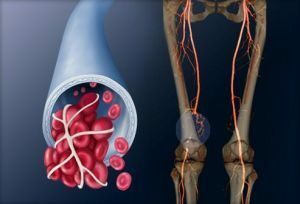 If the violation of the circulation of the lower limbs is observed in the venous vessels, then it is characterized by pain sensations that can be localized in any part of the lower limb.
If the violation of the circulation of the lower limbs is observed in the venous vessels, then it is characterized by pain sensations that can be localized in any part of the lower limb.
Thus, the pain can be indicative of the disease, which is felt in the lower leg, knee, thigh, foot, in rare cases in the lumbar region.
Often the symptom of the disorder is weakness in the legs or heaviness, chilliness, numbness, or convulsions. Very rarely the disease is asymptomatic.
Diagnostic criteria
In order to diagnose circulatory disturbance of the lower limbs and prescribe appropriate treatment, it is important for the expert to specify a number of factors: the cause, location and depth of localization, the type( partial or complete closure of the vessel) and degree.
There is currently a classification according to the stages of development of blood flow disorders that depend on the symptoms:
- The first - full compensation occurs. There is a chilliness in the feet, tingling, numbness and fatigue, which occurs only after physical exertion.
- The second is a deficiency that occurs with functional loads. In this case, all the symptoms of the first stage are observed, and also the intermittent claudication can develop.
- Third - in a state of rest there is a failure. There are painful sensations that do not pass at rest and at night.
- Fourth - in the legs there are ulcerative necrotic changes. In this case, the development of pathology is accompanied by signs of gangrene and ischemic pain sensations. In order to facilitate the condition, patients are prescribed painkillers on a narcotic basis.
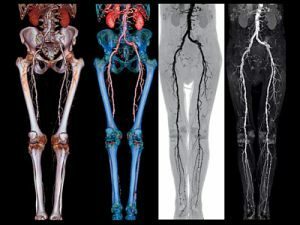
In order to conduct diagnostics, specialists apply a wide variety of methods, including palpation, face-to-face examination, austulcation and percussion. In addition, additional studies are underway:
- doplerography of vessels by ultrasound;
- angiography;
- capillaroscopy;
- measures skin temperature;
- MRI with contrast and magnetic resonance angiography.
Traditional treatment of the disease
In order for a specialist to prescribe a method of treatment, it is necessary to identify the source of the disorder. In general, the traditional method of therapy implies a whole range of activities. In addition, the mandatory measure of treatment is the adoption of drugs that can improve the tone of blood vessels and strengthen the capillaries.
Traditional treatment of circulatory disorders of the lower limbs can be physiotherapeutic and surgical. Physiotherapy therapy is suitable only for the initial stage of pathology.
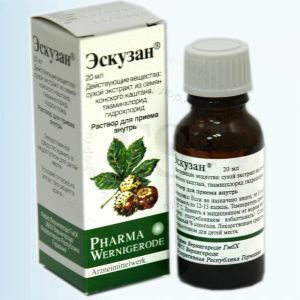 In this case, the patient must take a number of drugs: venotonics, geomapatic and phlebotrophic drugs, Liphotonics and angioprotectors, as well as agents that improve blood circulation, anti-inflammatory and anticoagulants.
In this case, the patient must take a number of drugs: venotonics, geomapatic and phlebotrophic drugs, Liphotonics and angioprotectors, as well as agents that improve blood circulation, anti-inflammatory and anticoagulants.
If the stage of the disease is quite neglected, then physiotherapy treatment is not enough, surgical measures will be required: open surgery and angioplasty.
The second method involves a puncture in the groin area and the introduction into the artery of a special thin catheter with a balloon at the end. Thus, the catheter is brought to the place where the occlusion occurred and the balloon is inflated to expand the artery. Thus, the blood flow is restored. To avoid relapse, stent placement is required.
What can I do at home?
It is possible to normalize the blood circulation system at home. The main thing is that all activities are carried out in conjunction with traditional treatment.
General strengthening procedures
Therefore, the following procedures should be followed:
- contrast shower for feet;
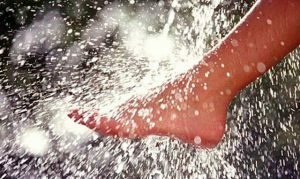
- more movements, sport should become the main part of life( with sedentary work it is recommended to work around the workplace every 40 minutes);
- should abandon bad habits;
- when choosing shoes, one should pay attention not to appearance, but to material and convenience( no narrow shoes and heels);
- in the relaxed state of the leg should be in a position that does not put pressure on them;
- at least once a day should be done foot massage, just rubbing each for 5 minutes;
- should adhere to the system of proper nutrition and abandon fast food and fatty foods;
- sleep is also an important factor, it should be full, at the right time, at least 7 hours.
Traditional recipes
Traditional medicine is effective, but it is better to use it together with a specialist prescribed treatment. Thus, in the future, problems and complications can be avoided.
Traditional medicine in case of circulatory disturbance implies the following activities:
- Every morning, at least half an hour before the release, needs to lubricate the feet with lemon juice .After the product has absorbed, the
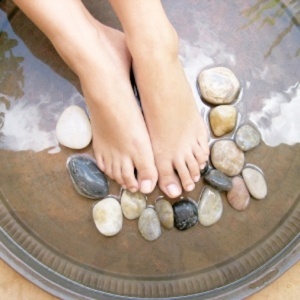 can be worn.
can be worn. - An effective tool is tubs .Thus in water it is necessary to add broth of a root aira and from other grasses which possess a vasodilating effect. In the broth, you can also add nettle, oregano, turn, thyme, black currant leaves and chamomile.
- If varicose is observed, then you can prepare the following remedy: in a glass of hot water, dissolve a teaspoon of chopped red pepper. Before use, the solution should be shaken well. Take the drug 3 times a day for 20 days.
Strengthening of the vessels of the feet
In order to strengthen the vessels, first of all it is necessary to go in for swimming, jogging, and also benefit from cycling and walking.
In addition, it is necessary to adhere to other rules:
- Do not allow blood stagnation in the veins of .This requires as much as possible to move and not sit for a long time in one place. It is recommended to raise your legs at least once a day and stay in this position for at least 5 minutes.
- Clothing should be comfortable and should not constrain the .If this does happen, the outflow of blood will slow down. Therefore, for people with a similar problem, it is not recommended to wear corsets, belts and tights.
- elastic bandages are rarely used.
- Also medical baths are used for vascular strengthening. In the water must be added a few ice cubes and a decoction of herbs. In addition, a decoction can simply wipe the veins.
- And also is required for performing the exercises , which consist in flexing and unbending the feet in the ankle. It is also necessary to rotate in different directions with stops. For best results, you can take your legs back in turns.
- Among other things, you need to use gels, ointments and creams that contain marigold extract and horse chestnut .
Consequences of the disease
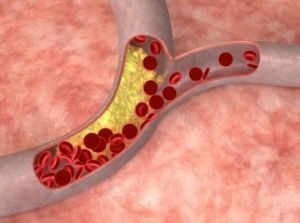 If the process is started, myocardial infarction may develop. In addition, the risk of stroke increases, and deaths increase as a result of complications from cardiovascular diseases.
If the process is started, myocardial infarction may develop. In addition, the risk of stroke increases, and deaths increase as a result of complications from cardiovascular diseases.
Complications during treatment may depend on the development of intermittent claudication. In this case, the removal of symptoms of this pathology.
In diabetes, everything is significantly more complicated. If this ailment is absent, then the condition can be stable for many years, without changes. In some cases, development of critical ischemia may occur. At the same time in 25 - 45% of cases, a fatal outcome is likely.
Circulatory disturbance of the lower extremities is an easily eliminated pathology, in the case of finding out the reasons. The main thing is not to let things go. In order to avoid complications it is recommended to undergo a survey every half a year. While maintaining a healthy and active lifestyle, the risk of developing the disease is significantly reduced.
